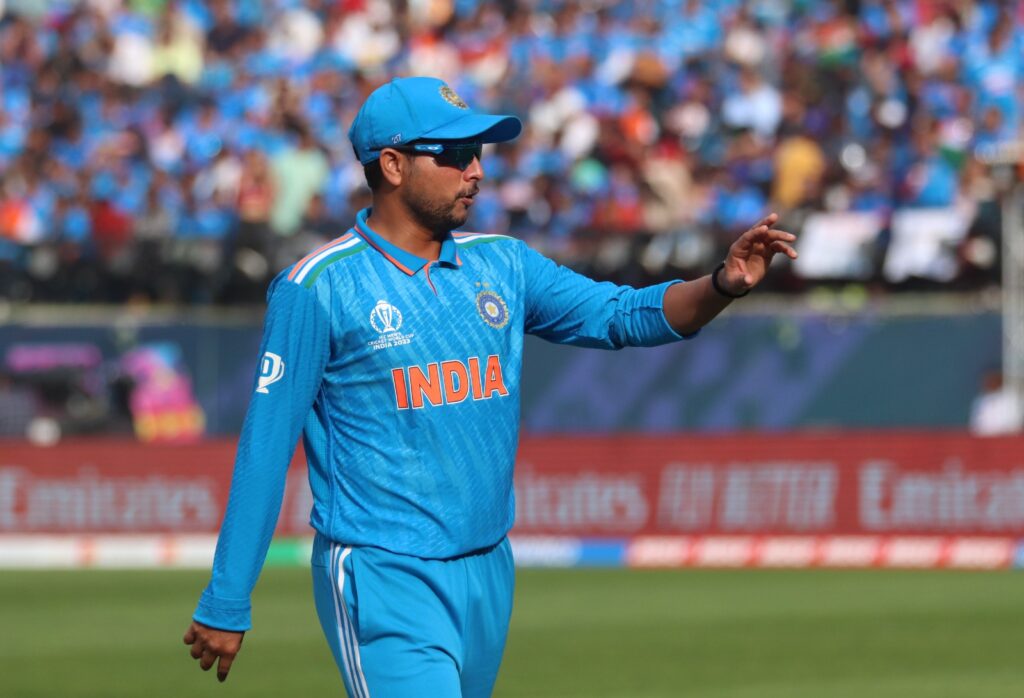
There has been a clinical touch to each of India’s victories in the ICC World Cup, surging as it is towards claiming a semi-final slot ahead of all other teams. Their intent is palpable, and clear in their planning and nailing the execution of these plans as well as it possibly can. It has found the players to address each of its needs.
Yet, the brilliance of Virat Kohli (354 runs), Rohit Sharma (311 runs), Jasprit Bumrah (11 wickets) and Mohammed Shami (five for 54 against New Zealand) tends to overpower some other facets that are vital components of the team’s drive to victory. It would be wrong to overlook these performances when evaluating the team’s successes.
For instance, in the wake of Virat Kohli’s characteristic orchestration and Rohit Sharma’s blitz at the start of the chase against New Zealand in Dharamsala on Sunday, it would be easy to ignore Ravindra Jadeja’s all-round contribution, conceding just 48 runs in 10 overs and making 39 not out to deny any aspirations the visiting team would have had of staying at the top of the table.
India relentlessly did what it had to do, not worrying about the uncontrollable. It could not do much about Hardik Pandya’s absence, other than embrace the challenge that came along. It looked at it as an opportunity for someone else to show that he can step up the plate and effectively lend his shoulder to the team’s wheel.
As a side which has played its last two games with the same XI and does not have a similar all-rounder to Pandya in its ranks, India were forced to bring in Suryakumar Yadav in the middle-order and leave out Shardul Thakur to include paceman Shami against New Zealand.

On another day if a sixth bowler were available to Rohit Sharma, with figures of 6-0-54-0, Kuldeep Yadav may not have completed his 10 overs. But when he was called upon to hold his nerves, he responded admirably while sending down the remaining overs. Such a show of holding together under stress slipped under most radars in the face of Shami’s five-wicket burst.
Look at it dispassionately, New Zealand were well placed at 147 for two in 30 overs and cruising at 187 for three five overs later. Kuldeep would have to bowl four of the remaining 15 overs. A 300-plus total was looming, and the Chinaman-bowler had to play his part in derailing New Zealand’s plans and giving the Indian batters a fair crack at the target.
He had to see the four overs as an opportunity to make something work, control the situation and turn it around to his advantage, rather than see the 24 deliveries as a chore to be completed. He decided that he was not going out of the game as a ‘failure’ but to find ways in which to leave his own imprint on the proceedings.
In a situation where ‘failure’ and ‘worry’ would have been upper most in any mind — after all, Kuldeep was expected to turn the ball on any track with his magical wrists — the left-armer had to find calm amidst the storm. He achieved this by sticking to the basics and not trying anything fancy.
It was a good example of a cricketer backing himself to come good in an adverse situation. He remained undeterred when Tom Latham swept him to the boundary and Daryl Mitchell guided one to the fine-leg fence. He still had more than a quarter of his quota left to bowl and he did not let his belief slacken.
His patience and craft would be rewarded. He trapped Latham in front in the 37th over, sent down another tidy over before being recalled by Rohit to bowl the 45th. India had done well to apply the brakes, conceding just 58 runs in the 10 overs after the 35th. But New Zealand still had six wickets in hand, with Mitchell and Glenn Philips going strong.
Kuldeep lured Philips with a floated Chinaman to try and hit him out of the park. The ball soared so high in the Dharamsala sky that any of Rohit, Bumrah and KL Rahul could have taken the catch. Conceding just two runs in his final over and claiming this wicket saw the bowler finish his quota with two for 73.
Without taking anything away from the other four bowlers who each contributed to the jigsaw coming together, Kuldeep’s transition was the key to India scuttling New Zealand’s charge to the 300-plus total. Had he not been relentless, had he allowed his shoulders to sag and had he been intimidated by pressure, India could have ended up chasing a bigger target than 272.




